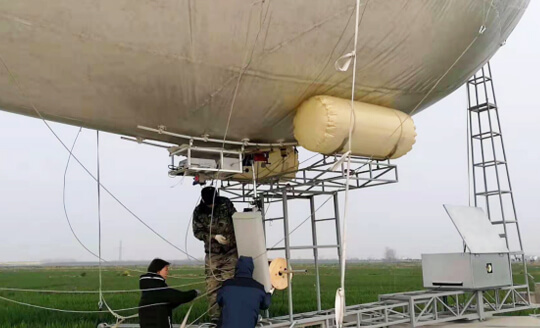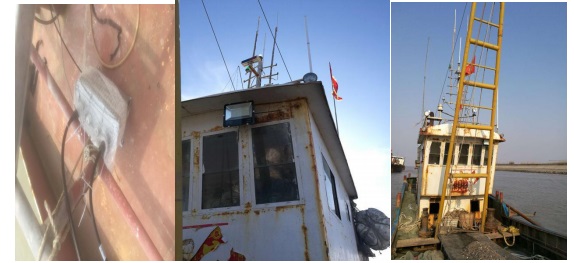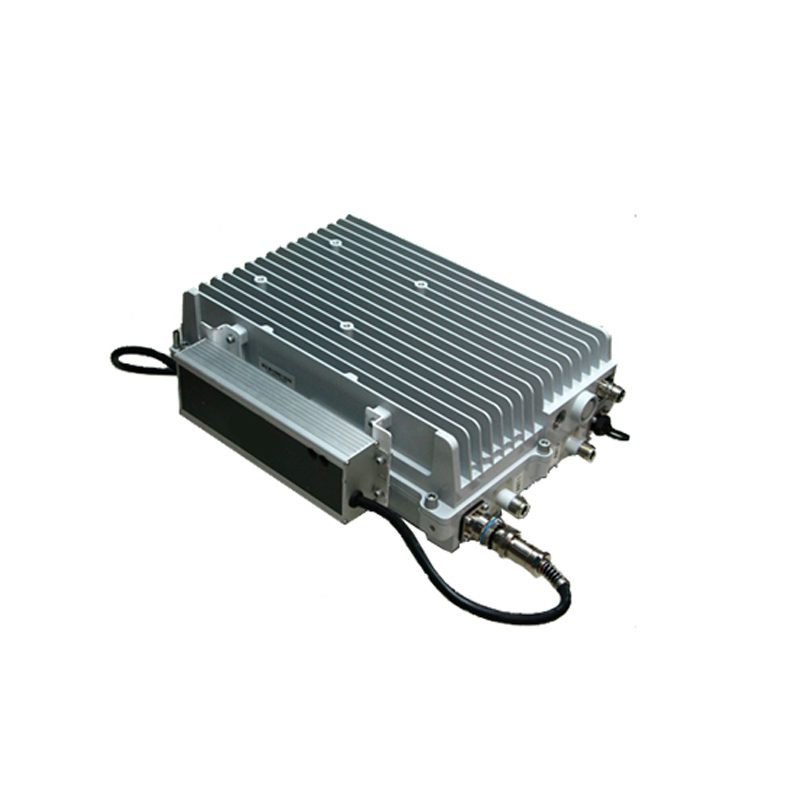Background Technology
Current connectivity is becoming more and more important for marine applications. Keeping connections and communications on the ocean allows the ships to safely travel and cruise a large challenge.
The IWAVE 4G LTE Private Network Solution may solve this problem by providing a stable, high speed, and secure network to the ship.
Let's learn that how the system helps below.
1. Testing time: 2018.04. 15
2. Testing purpose:
• Performance Test of TD-LTE Wireless private network technology in the marine environments
• Verifying wireless coverage of integrated base station (PATRON - A10) in Ocean
• A relationship between a wireless coverage distance and an installation height of a private network base station (PATRON - A10).
• What is the download rate of the mobile terminals on board when the base station is deployed in the air with the helium balloon?
• The helium balloon is deployed with the network speed of the mobile terminal of the base station in the air.
• When the base station antenna swings in the sky along with the balloon, the influence of the base station antenna on the wireless coverage is verified.
3. Equipment in Testing:
Device Inventory on Helium Balloon
|
TD-LTE wireless private network integration system (ATRON - A10)*1 |
|
Optical transceiver * 2 |
|
500meters Multimode fiber network cable |
|
Laptop * 1 |
|
Wireless router * 1 |
Equipment Inventory on ship
|
High-power vehicle-mounted CPE (KNIGHT-V10) * 1 |
|
High-gain 1.8 meters omnidirectional glass fiber antenna * 2 (including feed cable) |
|
Network cable |
|
Laptop * 1 |
|
Wireless router |
Setup Complete Test System
1、Installing a Base Station
The LTE private network all in one base station is deployed on a helium balloon that is 4 km away from the shoreline. The maximum height of the helium balloon was 500 meters. But in this test, its actual height is about 150m.
The installation of the directional antenna on the balloon is shown in FIG.2.
The horizontal angle of the main lobe faces the sea surface. Pan-Tilt can quickly adjust the horizontal angle of the antenna to ensure signal coverage direction and area.

2、Network Configuration
Wireless all-in-one LTE base stations (Patron — A10) on balloons are connected to a fiber optic network via Ethernet cables, fiber optic cables, fiber optic transceivers, and router A. Meanwhile, it is connected to an FTP server (laptop) through wireless router B.
3、Deployment 10watts CPE (Knight-V10) on board
CPE (Knight-V10) is mounted on a fishing boat and the antenna is mounted on top of the cab. The primary antenna is mounted at 4.5 meters from the sea level and the secondary antenna is 3.5 meters from the sea level. The distance between the two antennas is about 1.8 meters.

The laptop on the ship relates to the CPE through a network cable and relates to the remote FTP server through the CPE. The FPT software of the laptop and the remote FTP server are used together for FTP download testing. Meanwhile, the traffic statistics tool running on the laptop can record Internet traffic and traffic in real time. Other testers use mobile phones or pads to connect to the WLAN covered by the CPE to surf the Internet in the cabin, such as watching an online movie or making a video call to test the Internet speed.
Configuration of a Base Station
|
Center frequency: 575Mhz |
|
Bandwidth: 10Mhz |
|
Wireless power: 2 * 39.8 dbm |
|
Special subframe ratio: 2:5 |
|
NC: is configured as 8 |
|
Antenna SWR: main antenna 1.17, auxiliary antenna 1.20 |
Testing process
Test Start
On Apr. 13,15: 33, fishing boat was sailing, and 17: 26 on the same day, the balloon was lifted to a height of 150meters and hovered. Then, the CPE is wirelessly connected to the base station, and at this time, the fishing boat is far away from the station 33km.
1、Test Content
The laptop on the ship has an FPT download, and the target file size is 30G. The pre-installed BWM software records real-time Internet traffic and records the GPS information in real time through the mobile phone.
Other staff on the fishing boat access the Internet through WIFI, watch online videos and perform video call. Online video is smooth, and video call voice is clear. The entire test was 33km - 57.5 km.
2、Test recording table
During testing, the filler components on the vessel record GPS coordinates, CPE signal strength, FTP average download rate, and other information in real time. The data record table is as follows (distance value is the distance between the ship and the shore, the download rate value is the download rate of the BWM software record).
|
Distance (km) |
32.4 |
34.2 |
36 |
37.8 |
39.6 |
41.4 |
43.2 |
45 |
46.8 |
48.6 |
50.4 |
52.2 |
54 |
55.8 |
|
Signal Strength (dbm) |
-85 |
-83 |
-83 |
-84 |
-85 |
-83 |
-83 |
-90 |
-86 |
-85 |
-86 |
-87 |
-88 |
-89 |
|
Download Rate (Mbps) |
10.7 |
15.3 |
16.7 |
16.7 |
2.54 |
5.77 |
1.22 |
11.1 |
11.0 |
4.68 |
5.07 |
6.98 |
11.4 |
1.89 |
3、Signal Interrupts
On Apr. 13,19: 33, the signal was suddenly interrupted. When the signal is interrupted, the fishing boat is onshore away from the base station about 63km (under inspection). When the signal is interrupted, the CPE signal strength is - 90dbm. Base station GPS information: 120.23388888, 34.286944. Flast FTP normal point GPS information: 120.9143155, 34.2194236
4、Test completion.
On the 15th April, all stuff members on the vessel return to onshore and complete the test.
Analysis of Test Results
1、 Horizontal coverage angle of antenna and fishing ship navigation direction
The coverage angle of the antenna is substantially the same as the route of the vessel. From the CPE signal strength, it can be concluded that the signal jitter is relatively small. In this way, the directional pan-tilt antenna may substantially satisfy signal coverage requirements in the ocean. During testing, the directional antenna has a maximum cut-off angle of 10 °.
2、FTP Recording
The right graph represents the FTP real-time download rate, and the corresponding GPS location information is reflected in the map. During testing, there are several data traffic jitter and the signals in most regions are good. The average download rate is higher than 2 Mbps, and the last lost connection location (63km away from the shore) is 1.4 Mbps.
3、Mobile terminal test results
The connection from the CPE to the wireless private network is lost, and the online video watched by the worker is very smooth and has no lag.
4、Signal Interrupts
Based on the base station and CPE parameter settings, the CPE signal strength should be about - 110dbm when the signal is interrupted. However, in the test results, the signal strength is - 90dbm.
After the analysis of the teams, it is the primary reason to infer that the NCS value is not set to the farthest parameter configuration. Prior to the start of the test, the worker does not set the NCS value to the farthest setting because the farthest setting will affect the download rate.
Refer to the following figure:
|
NCS Configuration |
Theoretical frequency band for a single antenna (20Mhz Base Station) |
Theoretical bandwidth of dual antennas (20Mhz Base Station) |
|
Setup in this Test |
52Mbps |
110Mbps |
|
The farthest Setup |
25Mbps |
50Mbps |
Suggestion: The NCS is set to the farthest setting at the next test, and the throughput of the system and the number of connected users are concerned when the NCS is set to a different configuration.
Conclusion
Valuable test data and experience were obtained by IWAVE technical team through this testing. The test verifies the network coverage capability of the TD-LTE wireless private network system in the marine environment and the signal coverage capability in the ocean. Meanwhile, after the mobile terminal accesses the Internet, the downloading speed of the high-power CPE under different navigation distances and user experience is obtained.
Products Recommendation
Post time: Mar-13-2023



